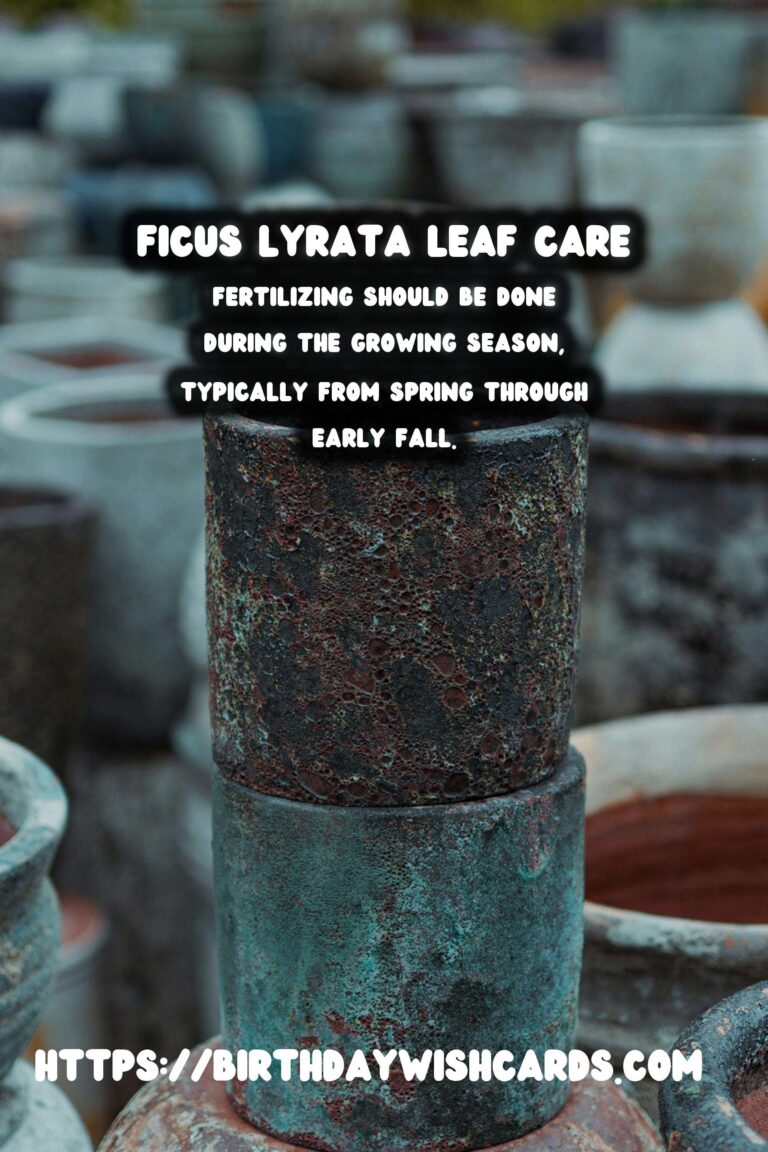
The Ficus Lyrata, commonly known as the fiddle leaf fig, is a popular houseplant known for its large, glossy leaves and dramatic presence. To ensure its continued growth and health, proper fertilization is crucial, especially when it comes to encouraging new leaf development. This article will guide you through the best practices for fertilizing your Ficus Lyrata to promote lush, new foliage.
Understanding the Nutritional Needs of Ficus Lyrata
Ficus Lyrata requires a balanced diet of nutrients to thrive. Like most houseplants, it benefits from the three primary macronutrients: nitrogen (N), phosphorus (P), and potassium (K). Each of these plays a vital role in the plant’s overall health and growth.
Nitrogen is particularly important for leaf growth, making it a key component in fertilizers aimed at promoting new leaves. Phosphorus supports root development and flowering, while potassium contributes to overall plant health, aiding in disease resistance and water regulation.
Choosing the Right Fertilizer
When selecting a fertilizer for your Ficus Lyrata, look for a balanced N-P-K ratio, such as 3-1-2 or 10-10-10. These ratios ensure that your plant receives an adequate supply of each macronutrient. Slow-release fertilizers are a convenient option as they provide a steady supply of nutrients over time, reducing the risk of over-fertilization.
Organic fertilizers, such as worm castings or compost, can also be beneficial. They not only supply nutrients but also improve soil structure and microbial activity, fostering a healthy growing environment for your Ficus Lyrata.
How to Fertilize Your Ficus Lyrata
Fertilizing your Ficus Lyrata should be done during the growing season, typically from spring through early fall. During this period, the plant is actively growing and can utilize the additional nutrients effectively.
Begin by diluting the fertilizer to half the recommended strength, especially if you are using a liquid fertilizer. Apply it to the soil around the base of the plant, ensuring even distribution. It’s crucial to water the plant both before and after fertilizing to prevent root burn and aid in nutrient absorption.
Signs of Over-Fertilization and Under-Fertilization
Over-fertilization can lead to nutrient burn, characterized by yellowing leaves, brown leaf tips, and stunted growth. If you notice these signs, flush the soil with water to remove excess salts and nutrients.
On the other hand, under-fertilization may result in slow growth and pale leaves. If your Ficus Lyrata shows these symptoms, consider increasing the frequency or concentration of your fertilization routine, but do so gradually to avoid shock.
Additional Tips for Healthy Ficus Lyrata Growth
In addition to proper fertilization, ensure your Ficus Lyrata receives adequate light. It thrives in bright, indirect light, which supports healthy leaf development. Rotate the plant periodically to promote even growth and prevent leaning.
Regularly clean the leaves with a damp cloth to remove dust and improve photosynthesis. Also, monitor humidity levels, as Ficus Lyrata prefers a humid environment. You can increase humidity by misting the leaves or placing a humidifier nearby.
By following these fertilization tips and general care guidelines, your Ficus Lyrata will reward you with vibrant, new leaves and a robust, thriving presence in your home.
Ficus Lyrata requires a balanced diet of nutrients to thrive. Nitrogen is particularly important for leaf growth, making it a key component in fertilizers aimed at promoting new leaves. When selecting a fertilizer for your Ficus Lyrata, look for a balanced N-P-K ratio. Fertilizing should be done during the growing season, typically from spring through early fall. Over-fertilization can lead to nutrient burn, characterized by yellowing leaves and stunted growth. Ensure your Ficus Lyrata receives adequate light for healthy leaf development. 









#FicusLyrata #FiddleLeafFig #PlantCare #Houseplants #GardeningTips




